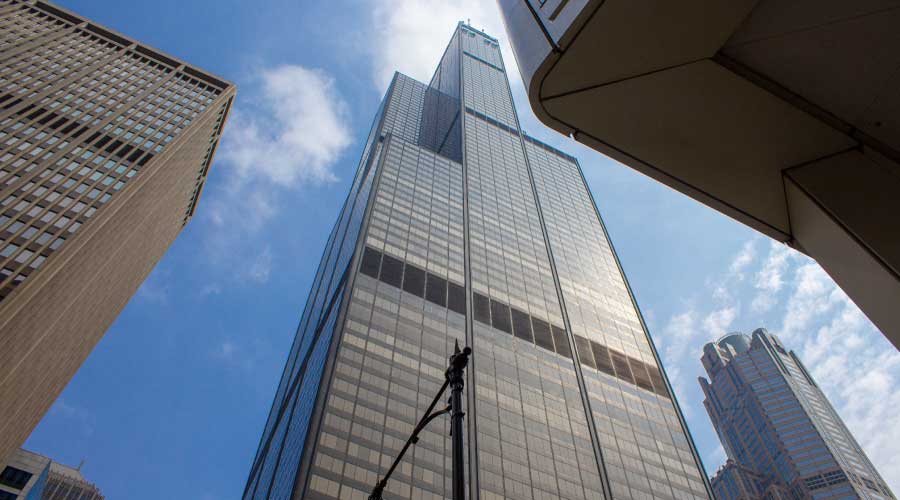How to Reduce Risk in Commercial Real Estate
Here is what you need to know about the current market to better protect your commercial property from disruption.
By Ryne Carney, Robert Sullivan, and Shailesh Kumar, Contributing Writers
The last three years have been unequivocally stressful for commercial real estate. As property managers and owners collectively navigate the unknown – from pandemic aftershocks to extreme weather – it’s important to understand how the commercial property market has been affected, and the steps that can be taken to better protect business from disruptions.
Economic Shifts May Boost the Property Market
The rapid rise in interest rates reduced activity in the property market over the past year. However, data from The Hartford’s Global Specialty Insights Center suggests that housing is generally mixed, though building activity is slowing, and nonresidential facilities are seeing resiliency in select areas. For example, in the commercial property sector, there seems to be strong growth in funding for manufacturing centers and highways. This is likely due to geopolitical shifts that have encouraged companies to build high-end technological products domestically such as semiconductors. While there remains growth in spending on commercial buildings, this is an area that otherwise shows some headwinds due to structural changes in this section of the economy.
Shifting Conditions in the Property & Casualty Space
Though economic conditions are improving, natural disasters will have a prolonged effect on coverage in the property and casualty space. Particularly, extreme weather is having a large impact on insurers encouraging businesses to create water mitigation plans before they will provide a quote.
In addition, there is increased market scrutiny on all valuations. To account for increased material costs, supply chain disruptions, and labor shortages, insurers are requiring property appraisals before quoting renewals to account for changes in building valuations. Insurers are also using various software, or benchmarks, to improve rate accuracy and determine if reported values are within expected ranges.
Risk quality is also becoming a vital component in underwriting decisions as insurers place greater scrutiny on the risks a commercial property may face. This will in turn affect the ability for businesses who have unresolved loss control recommendations, unaddressed hazards, and lack of engagement in loss prevention to properly insure their company.
Furthermore, lender requirements for building loans will become more expansive and detailed as there may be specific insurance requirements for limits, coverages, and deductibles that if not met, could result in loan defaults. These requirements have become more expansive and, in some cases, very difficult to meet in today’s market conditions.
The Risk of Being Under-Insured
Many businesses are under-insured and might not realize it. This is evidenced in a recent study of property appraisals by Kroll, which revealed that 68 percent of buildings valued from 2020 to 2021 were underinsured by 25 percent or more, which means that appropriate commercial property coverage is essential.
Replacement costs have also risen significantly over the course of last three years, beginning during the COVID-19 pandemic and persisting well into 2023. In addition, the market has seen a dramatic increase in building material and labor costs driven by supply chain challenges, labor shortages, and catastrophic weather events.
These elevated labor and material costs can therefore leave a business under-insured. This means that if there is a major loss, the limits might not be enough to cover replacement costs at today’s higher prices. Commonly used construction materials including steel, copper, lumber, and aluminum have gone up in price, and construction delays and supply chain challenges have driven up replacement costs as well.
A timely and accurate assessment of replacement costs can be the difference between a business recovering quickly or incurring additional costs. For example, if a property owner faces an under-insured issue on a total loss, they can experience out-of-pocket costs on top of the deductible, which impacts business profitability. The most common sign of potential under-insurance is policy limits that have experienced little to no increase in recent years, in contrast to labor and material costs, which have risen dramatically. This imbalance can result in policy limits now being significantly undervalued.
Valuation Process Is Essential for Commercial Property
Risk will always exist for the commercial property market. Consistent valuations are essential to maintain accurate coverage for a company and stay ahead of potential losses. Without proper valuations, an insurer cannot accurately estimate loss potential or obtain adequate pricing at the individual and portfolio level.
Property valuations should be revisited at a minimum on an annual basis. For most insureds, insurance renewal is a natural time to undertake this process. While building valuation is often top of mind, it is important for buyers to also review other key property insurance coverages, such as business personal property and business interruption.
Working with an agent or broker well ahead of the policy expiration will help a property owner rest comfortably knowing that there is adequate time to plan for all aspects of the renewal. This includes identifying replacement costs for critical machinery and equipment, property valuation, and calculating income replacement if a loss were to happen. Partnering with an experienced insurance company can also be beneficial and symbiotic to the structural mitigation efforts undertaken by a business owner.
Ryne Carney is head of property for The Hartford’s Middle and Large Commercial segment.
Robert Sullivan is the Real Estate Industry Practice Lead for The Hartford’s Middle and Large Commercial segment. With more than 30 years of underwriting experience, Robert specializes in the real estate, retail, restaurant, and hotel industry sectors. He leads a dedicated team of subject matter experts that are passionate about understanding industry trends and rapidly changing customer needs.
Shailesh Kumar leads The Harford’s Global Specialty Insights Center. He is an economist with deep expertise in economic, credit and geopolitical matters. He was formerly with the U.S. Department of the Treasury.
Related Topics:












